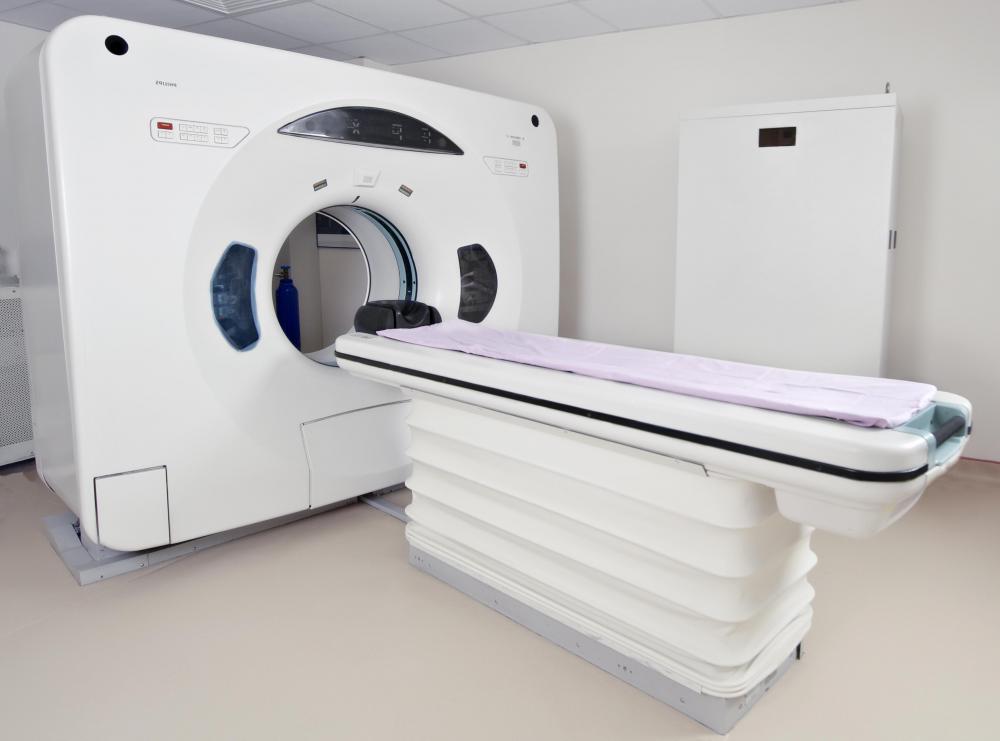At WiseGEEK, we're committed to delivering accurate, trustworthy information. Our expert-authored content is rigorously fact-checked and sourced from credible authorities. Discover how we uphold the highest standards in providing you with reliable knowledge.
How does an MRI Brain Scan Work?
A magnetic resonance imaging (MRI) brain scan, also called a head MRI, creates an image of the brain through the use of a computer, a magnetic field and radio waves. It is a painless, noninvasive procedure that can take several hours to complete. While undergoing an MRI brain scan, the patient lies down on a bed that is moved inside the tube-shaped MRI machine. The magnetic field lines up water molecules inside the body and when radio waves are sent towards these molecules, they produce signals that the computer records to create the image.
An MRI brain scan can be performed to diagnose or monitor different illnesses including aneurysms and multiple sclerosis. The resulting image is detailed and can show more than similar procedures such as a computed tomographic (CT) scan or x-ray. CT scans and x-rays both use radiation, whereas an MRI scan does not. In some cases, an individual might have an MRI scan instead of another procedure because of this lack of radiation.

During the MRI brain scan, there will be a person operating the machine from another room. This operator can communicate with the patient via a microphone or intercom. The machine itself might make a lot of noise during the procedure, so the patient might use ear plugs in order to decrease the sounds.
The patient should move as little as possible to ensure that the computer is able to capture a clear image. In some cases, a contrast agent might be administered into the patient to gain a better image of certain parts of the brain. Spending a long time in a close environment might be a problem for someone who is claustrophobic. A patient who is claustrophobic should consult his doctor, who might suggest a sedative to keep him calm while in the machine.

The magnetic field in the machine is strong and for safety’s sake; metal objects are not allowed into the room. This includes items such as glasses, jewelry and metal zippers. In addition, individuals with any metal objects within their bodies are not allowed to get an MRI scan; this includes people with brain aneurysm clips and cochlear implants. Before undergoing an MRI brain scan, the patient will have to put on a hospital gown. After the procedure is completed, the patient will be able to continue his daily activities if he did not take a sedative.
AS FEATURED ON:
AS FEATURED ON:

















Discuss this Article
Post your comments